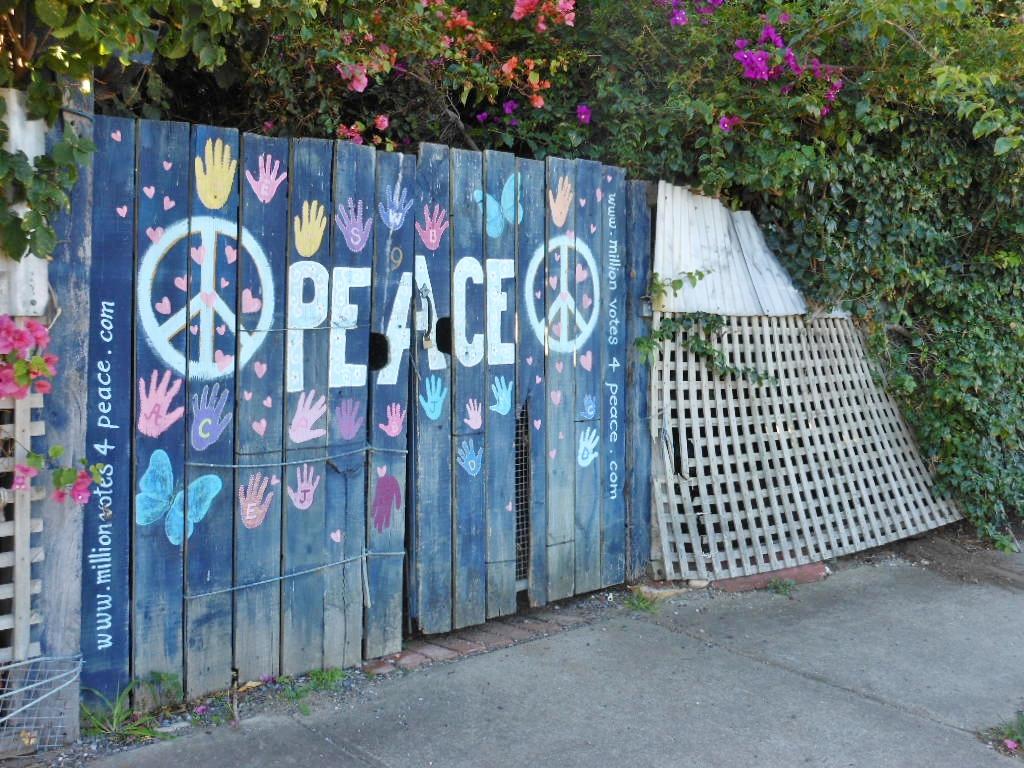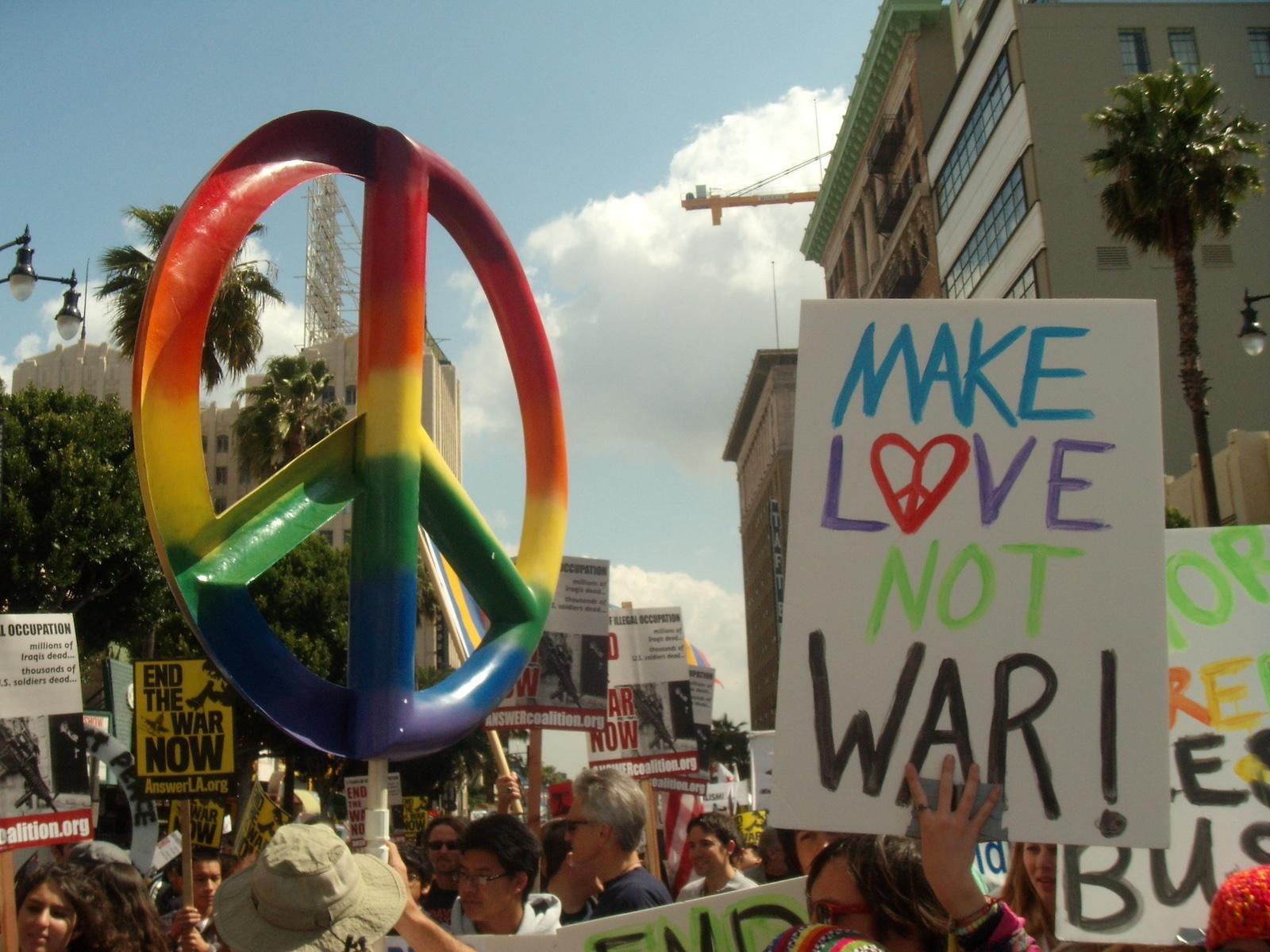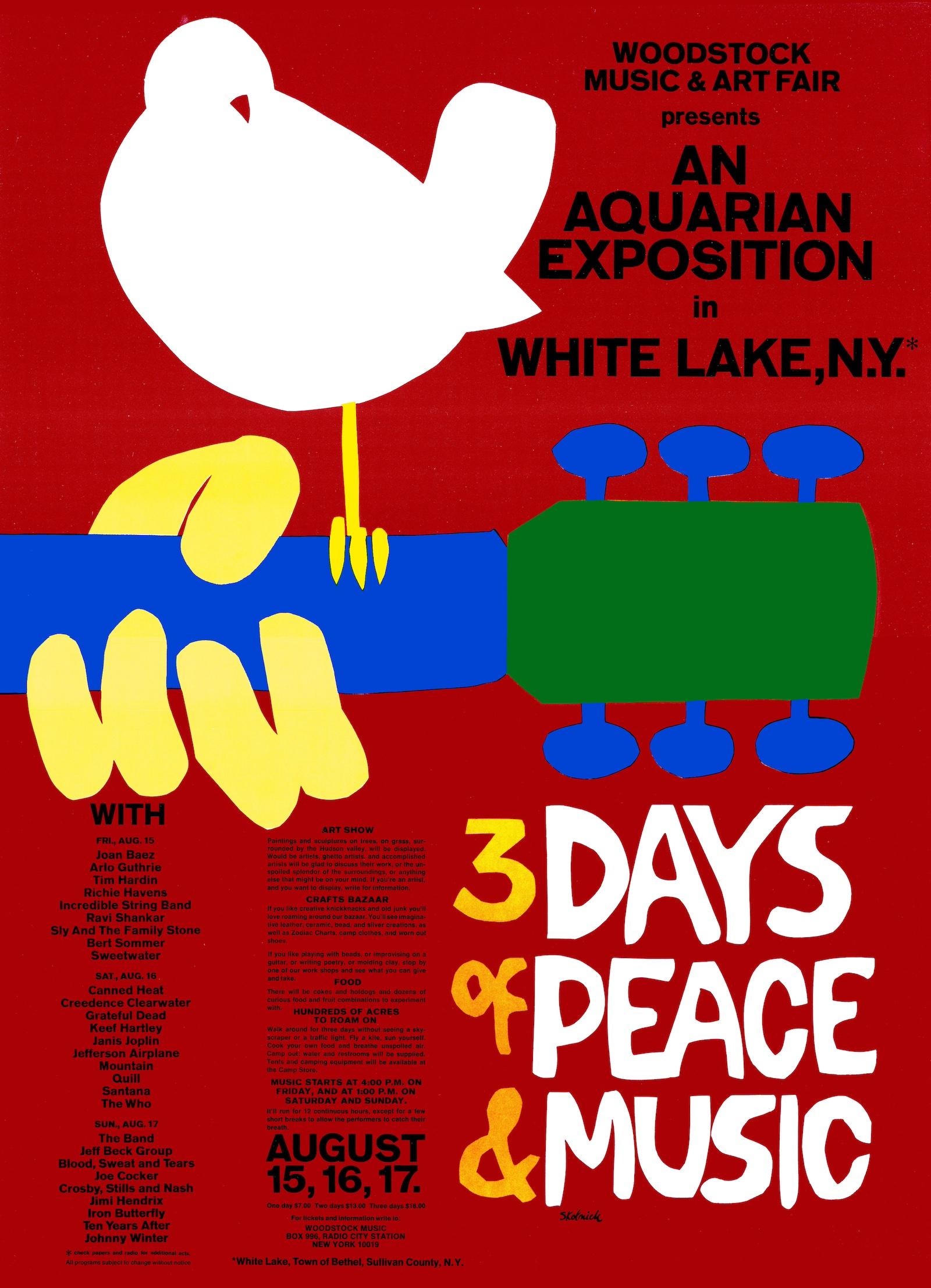Sailors would create this upside-down “V” by putting their flags out at their sides. This symbolized the letter “N.” A single flag held straight above their heads (similar to the line dissecting the circle) represented a “D.” Put together, the “N.D.” code translated to “nuclear disarmament.”
Although not entirely anti-war, the symbol stood for the anti-nuclear movements following the threat of nuclear destruction during the Cold War. The designer behind the peace sign, Gerald Holtom, created the official icon in 1958 for the British Campaign for Nuclear Disarmament (CND)— earning the peace sign its alternate label as the CND symbol.
Peaceful protestors had planned a march from London to the nuclear weapons research center and wanted something to unify their crowd. Following Holtom’s creation, around 500 cardboard cutouts of the symbol were held up on sticks during the march, signaling the peace sign’s first official public appearance.
































